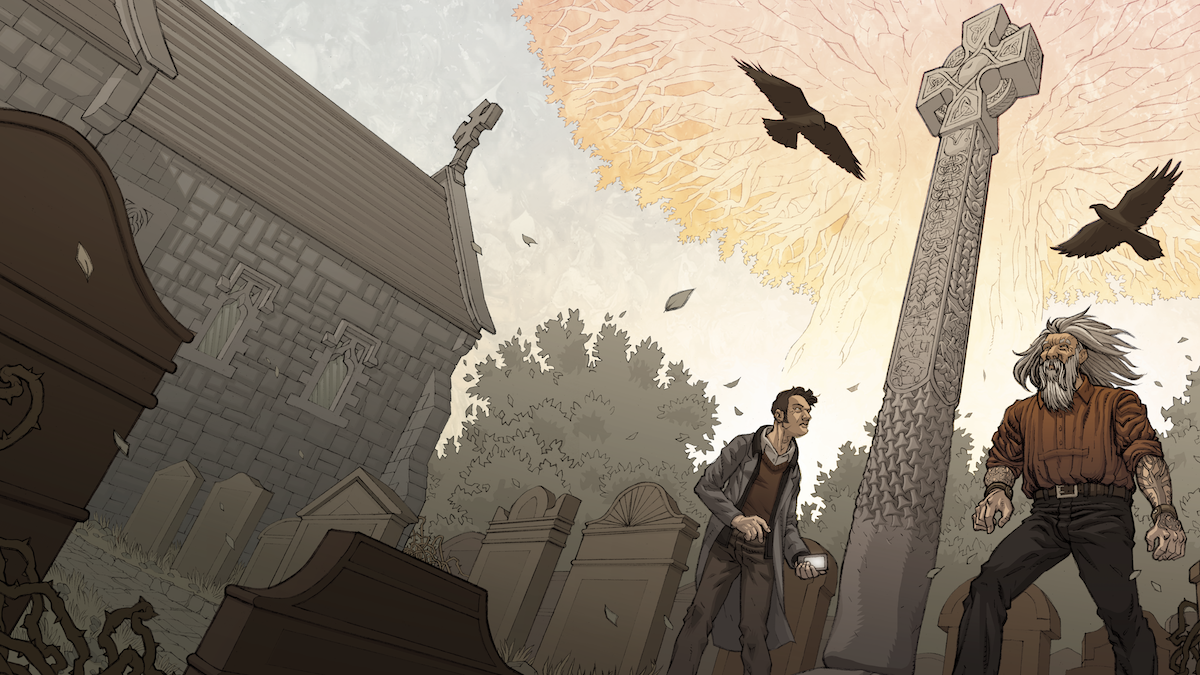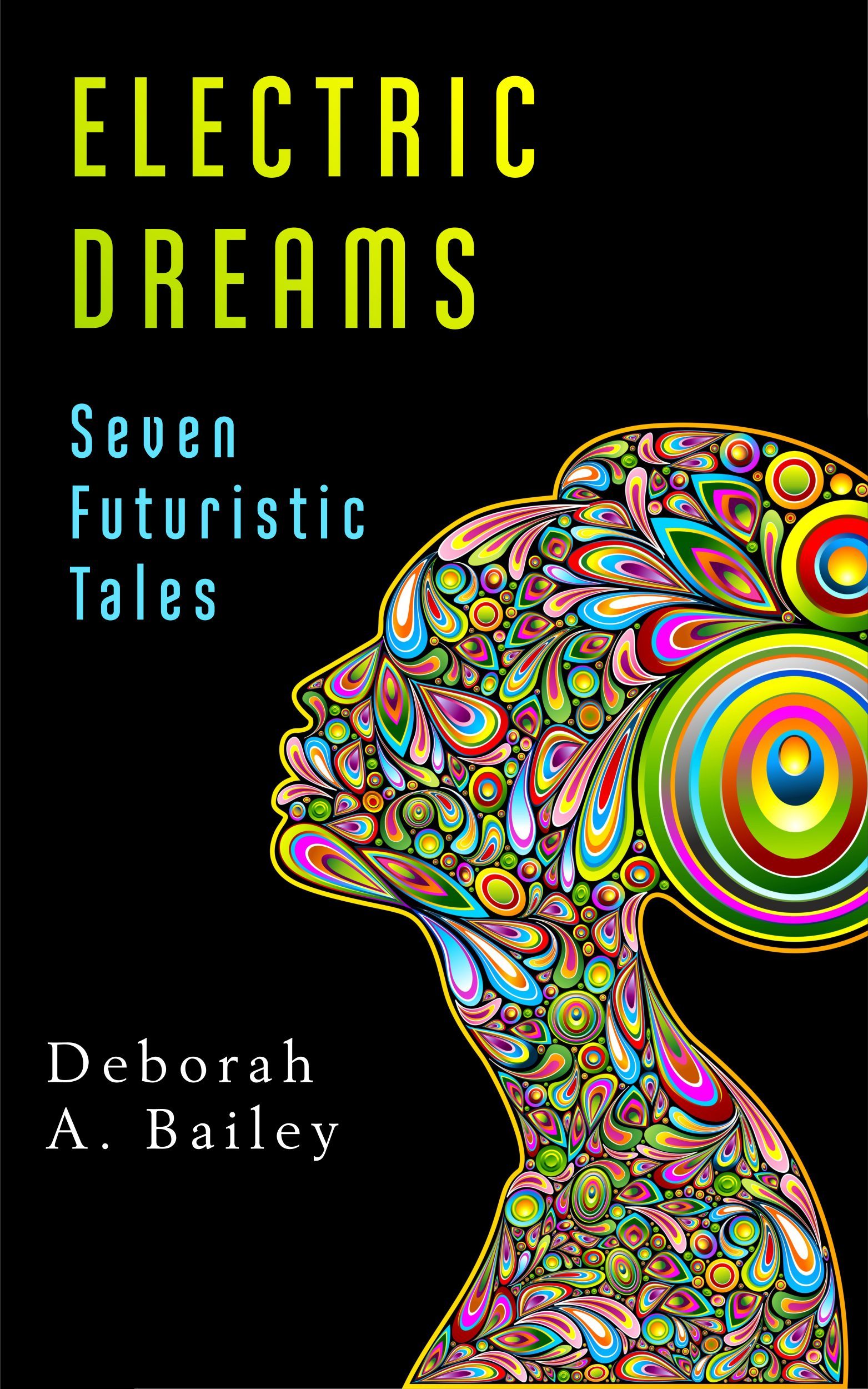
If you were to pick up The All Father Paradox, a new fantasy adventure novel by Ian Stuart Sharpe, you’d see a very interesting dedication in the front of the book. Ian was kind enough to share with us the story behind his dedication, and the Norse myth that inspired it all.
For my wife, who has Thiassi’s Eyes
Thórr said:
Say to me, Alvíss,
for it seems to me
there is nothing you do not know:
what is heaven called,
that all know,
in all the worlds there are?Alvíss said:
Heaven it is called by men,
the Arch by gods,
Wind-Weaver by the Vanir,
by giants High-Earth,
by elves Fair-Roof
by dwarves the Dripping Hall.
I thought long and heard about the dedication. Not about who I would dedicate the book to, of course. That was a given. I’d started writing the All Father Paradox almost in secret. With a breezy nonchalance, I’d declare I was “just going downstairs,” only to disappear for days on end. Eventually, tens of thousands of words later, I gave her the broad strokes of what had become a novel. Worse, a series. A whole new universe. It’s a testament to her generosity that we are still married.
The question was, how I would dedicate the book. When we first met—nearly fifteen years ago now, straight from a day’s work, all dressed up at Putney Station—we uncovered many little coincidences, little quirks that we shared. One of the biggest was that we both had pictures of big blue eyes on our phones. As screen savers. Images were something of a novelty back then. Perhaps, unwittingly, prophetically we made those devices into our demons, offering them windows to our souls—but at the time, they were deep, glistening pools full of young love.

And so, remembering that moment, I came up with the dedication. “For my wife, who has Thiassi’s Eyes.”
What!? I hear you cry. Let me explain.
Most people have some knowledge of the Greek mythology and that the constellations it inspired. My wife, for example, is a Gemini, linked by birth to stars first described by 2nd century AD astronomer Ptolemy.
Most people know Gemini is Latin for “twins,” as it is a sign of the zodiac—the twins in this case being Castor and Pollux. As the legend goes, when Castor was killed, Pollux asked Zeus to let him share his own immortality with his twin to keep them together, and they were given a place in the heavens.
When writing the All Father Paradox, I learned that the Norse thought very differently about their heavens. They certainly did not know of the constellations of the Greeks that have become our standard today. However, it would be unusual to presume they never had any names of their own, only that the knowledge of them has not come down to us.
Fortunately, the surviving mythology of Scandinavia has left us enough clues to allow us to piece together this forgotten knowledge of the past. At the time these myths were recorded, in 13th century Iceland, the people no longer believed in the old ways, but they respected the stories still. After all, they had existed for centuries, passed down from father to son, mother to daughter, all the way back to when the tribes of the North were first trying to make sense of their universe. In the Völuspa, the origin of the stars and planets are mentioned, as well as their end at Ragnarök. The world was created from the body of the giant Ymir. His skull forms the firmament and is held in place by four dwarves, where sparks from Muspellheim form the stars. Their place in the sky was determined by the gods and some were given paths they will roam. As in the Greek mythology, stories explain how they ended up in the sky.
There is a well-known Norse myth where a giant named Thiassi tricks Loki into giving him Iðunn and her golden apples, the apples that give the gods their youth and strength. Thiassi’s triumph is short lived, and his demise at the hands of the Norse gods is inevitable. His daughter, Skadi, comes for revenge and since the gods aren’t feeling like more bloodshed, they offer to pay her off. As a further reparation Odin took Þjazi’s (that’s the Old Norse spelling) eyes and placed them in the night sky as stars.
Scholars suspect that this constellation is what we call Gemini, just above and to the left of Orion. Two bright, glistening jewels, millions of light years away (the stars are quite different in detail: Castor is a complex sextuple system of hot, bluish-white A-type stars and dim red dwarfs, while Pollux is a single, cooler yellow-orange giant).
So, there you have it. A tale worthy of the skalds. Myth and modernity all rolled up into the perfect dedication. I had drunk my fill of the Mead of Poetry.
You can look up a typical Gemini—“Expressive and quick-witted, Gemini represents two different personalities in one and you will never be sure which one you will face. They are sociable, communicative, and ready for fun, with a tendency to suddenly get serious, thoughtful and restless.” I showed her the dedication a few weeks ago, on my phone, using a sample of the book I’d just downloaded from iTunes. She seemed pleased. At first.
“What?!” I heard her cry, after she’d looked up the story of Thiassi for herself.
“I’ve got the eyes of a murdered bloody giant, have I?”
About The All Father Paradox:
What if an ancient god escaped his fate and history was thrown to the wolves?
Churchwarden Michaels thought it was just a run-of-the-mill crazy old man who stood in the graveyard, hellbent on studying the 1,000-year-old Viking memorial there. But when things start changing and outright disappearing, Michaels realizes there is more to this old man than meets the eye. Now, Michaels finds himself swept up in an ancient god’s quest to escape his destiny by reworking reality, putting history—and to Michaels’s dismay, Christianity itself—to the Viking sword. In this new Vikingverse novel, storied heroes of mankind emerge in new and brutal guises drawn from the sagas:
A young Norse prince plots to shatter empires and claim the heavens…
A scholar exiled to the frontier braves the dangers of the New World, only to find those “new worlds” are greater than he imagined…
A captured Jötunn plants the dreams of freedom during a worlds-spanning war…
A bold empress discovers there is a price for immortality, one her ancestors have come to collect…
With the timelines stretched to breaking point, it’s up to Churchwarden Michaels to save reality as we know it…
About Ian Stuart Sharpe:
Ian Stuart Sharpe is the CEO of a tech start up. As a child he discovered his love of books, sci-fi and sagas: devouring the works of Douglas Adams, J.R.R. Tolkien, Terry Pratchett, and George MacDonald Fraser alongside Snorri Sturluson and Sigvat the Skald. He once won a prize at school for Outstanding Progress and chose a dictionary as his reward, secretly wishing it had been an Old Norse phrasebook. He lives in British Columbia, Canada.



